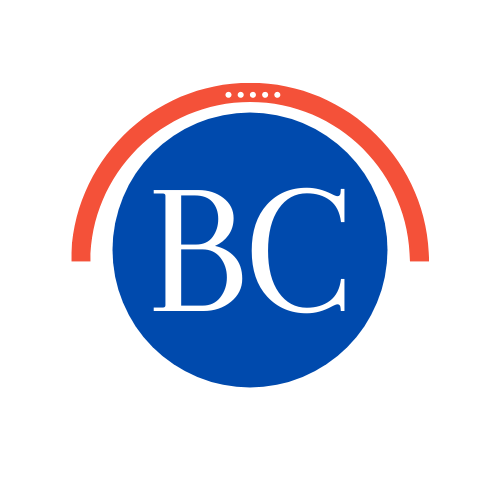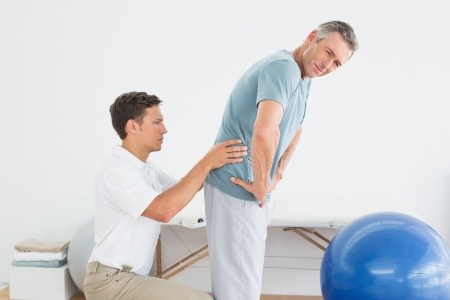This post talks about:
- What is Medical Massage?
- What are Brandon’s methods?
- Medical vs Wellness
- Adverse effects of Medical Massage
- How to become a successful client
What is Medical Massage?
-
- It’s not a “Swedish/relaxation” massage. Stereotypical massage is done without clothes on, using lotions or oils, in a dark room and playing relaxing music. The typical goals of relaxation massage is to reduce stress and general muscle tension.
-
- Your appointment for a medical massage will be different. Clothes are kept on at all times, athletic clothes are preferred for the best stretching and range of motion testing. Lotions are rarely applied. The lights are kept on and music may not be played.
-
- Medical Massage is focused on fixing a problem. Massage is very beneficial for many health issues and medical conditions, and medical massage is directed specifically towards benefiting existing medical conditions.
-
- Many people who suffer from chronic pain conditions need long term care for their muscles and health. Medical massage is an ideal option to help people with these chronic conditions.
What are Brandon’s methods?
-
- Brandon has been practicing in massage for over 11 years and personal training for over 6 years. This combination of training and massage allows for muscles to relax and get stronger which results in longer benefits and healing.
-
- Brandon is trained in Neurokinetic Therapy, an advanced assessment technique using muscle testing to find activation levels and muscle imbalances.
-
- Brandon is an educator and has been teaching anatomy, physiology, kinesiology, pathology, medical massage, orthopedic massage, muscle testing, trigger point therapy and myofascial release classes for over 5 years.
-
- Currently Brandon is teaching a nationally certified continuing education course for the massage community about spinal conditions.
-
- Because Brandon loves to educate, you will be hearing some lectures while in the office on topics relevant to your health and condition. Your education is important for your long term health and self care. Clarity will cure conditions, confusion will cause conditions.
Brandon’s method has 3 main goals.
3 Goals:
- Goal #1: Reduce Pain. When you first come to Brandon’s office, you will most likely be in pain. Our first goal will be to get the pain under control and stabilize the condition. In order to do that we will need to learn about your health. We do this with your BioSketch health forms, initial assessment appointment and continuing appointments. Most of our learning will occur during your initial assessment appointment which involves a thorough review of your BioSketch health forms, and assessments to understand your range of motion, pain levels and muscle health. We need to identify areas of your health which are being neglected and need more focus such as increased exercise, change of diet or more stretching. Brandon will help you look at the big picture of your health goals and strategize about the best plan to fix each issue.
- Goal #2: Fix the problem. Whatever we discover about your health, we now need to begin attempting to fix it. As your pain goes down we want to correct the root issue and increase function to prevent reinjury. Function is “nerd speak” for your balance, strength, range of motion and coordination. We need to start massage and exercise plans to release and strengthen muscle tissue. This involves regular massage and training appointments. For simple issues and dedicated clients, this process can take 2-3 months. For more complex issues this process can take 6-8 months. Most people see Brandon for about 4-6 months.
- Goal #3: Create a self care plan. You need to become self sufficient, or else you may get stuck seeing health practitioners for a long time. You need education, practice and self-discipline to continue your new lifestyle on your own. Once you’re able, you will begin self care which involves “homework” for you to do when you’re not in the office with Brandon. This can be stretches, exercises or lifestyle modifications.
Medical vs Wellness
-
- The standard idea of medicine and medical practitioners in the USA is a method which seeks to maintain a baseline of health in the general population.
-
- If you fall below your baseline of health then our medical system will help you get back to baseline.
-
- So if you threw out your back, then the doctors will try to help you return your back to how it was before the injury.
-
- Their methods often include pills, injections and surgery.
-
- Wellness is the idea that you are trying to return to baseline, but also go further and rise above the baseline.
-
- This is when someone heals from a disease and then they go beyond the expected limitation of that disease and they challenge themselves with a health achievement, such as running a marathon (not that you need to run any marathons).
-
- Most wellness practitioners are attempting to avoid treatments with side effects and choose more lifestyle modifications, holistic, natural or alternative methods.
-
- Massage therapy is a wellness method. Brandon uses medical massage to bridge the gap between the medical methods and the wellness methods.
Adverse (side) effects of medical massage
-
- “Adverse effects” is a way to describe side effects of a treatment or an unintended result.
-
- Most relaxation massages are done very safely. If the pressure is painful, the client can notify the therapist, who can lighten their pressure or change their techniques. If a client’s condition is too complicated, the therapist may choose to not work with that person or in that area.
-
- The reason it’s safe with few adverse effects is because the method is based on avoidance. This will definitely reduce the risk of an adverse effect, but it usually won’t fix the problem.
-
- Medical massage is different. Since our goal is to reduce pain and help complicated conditions, we don’t shy away from the scary areas or situations.
-
- Many musculoskeletal conditions are unclear in their presentation and there is not always an obvious method for working on it.
-
- The risk of an adverse effect is much more likely in medical massage which is why we must be thorough in our assessments, you (the client) must speak up to provide clear feedback for your therapist and the therapy plan will error on the slow side. If we rush for the fastest most intense method of therapy, we are much more likely to flare up a condition.
-
- If we try something new in our therapy plan or if we change strategy, then we must expect some reaction from the body to a new stimulus and we will probably have to make small adjustments to a new therapy in order to dial in the ideal techniques.
How to become a successful client?
1. Prevention is best.
“Change happens when the pain of staying the same is greater than the pain of change.” – Tony Robbins
“The time to repair the roof is when the sun is shining.” ― John F. Kennedy
If you are coming into my office, then likely, you are in pain. Perhaps you have known about a problem for a long time, but recently it has gotten worse and the pain is now too much for you. This is a common scenario for my office. Sometimes people need that flare up of symptoms to tell them that something is wrong and that its time to get help. If it doesn’t get “bad” then you may never do anything about it to make it better. Just realize that if you come to get help once the problem is at it’s worst. Then we’ll be trying to fix you roof in the rain. It may be a difficult and slow process. The best choice is always prevention. Come in sooner, rather than later.
2. Don’t miss or space out appointments.
You will get more value from your time with me when we interact with higher frequency. In our appointments together we will work to make changes in your health through massage and exercise, learning about the health problem, adding to and adjusting your self care plan.
If you have to visit with less frequency then you are more likely to lose motivation, forget your self care or slow down momentum. You will lose focus on your health. Sometimes missing appointments is unavoidable. You have trips or get sick. But as much as is possible. Avoid unnecessary rescheduling. The clients who see me once or 2x per week usually stay focused and get better in less total visits then the clients who see me once per month or longer. You will spend less total money if you get the problem fixed faster and stay focused.
3. The fastest recovery’s, are almost always clients from the military or competitive athletes.
Musculoskeletal dysfunctions often require proactive recovery. You don’t get better by being passive. You need to participate and do something in order to fix the problem. Commonly people will need to exercise and stretch more, make some dietary changes and maybe change work place ergonomics.
This can be challenging for you because it requires self-discipline. Whenever I work with athletes or veterans, they are already trained to have good physical self-discipline. Because of that background they typically get better faster than any other client I work with. The people who struggle the most are usually those who have never played sports, gone to a gym or had any physical routines. Also those who work a sedentary job will struggle too.
I encourage you to approach your health as if you are an Olympic athlete. Schedule time for your self-care, come to our appointments ready to take notes and be eager to learn.
4. Lastly, be chatty.
Health conditions are often mysterious. They are like puzzles which need to be put together. If we want to complete this puzzle then we will need all the pieces. There are many puzzle pieces which I can only find if you tell me about them. Such as your health history or current symptoms.
I fully understand the personality type who wants to be introverted and shy. But I rely on your verbal feedback. If I am releasing a muscle and you suddenly feel pain going down you leg, you need to tell me that information. I recommend for you to be chatty and tell me all the details.
Thank you for reading this post until the end. I hope you have a wonderful appointment and get better soon.

